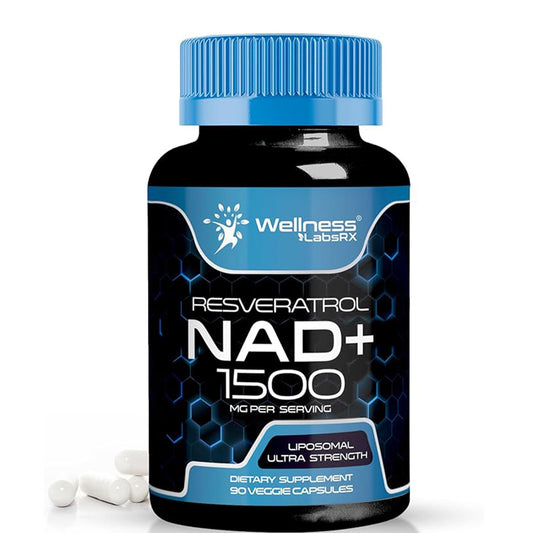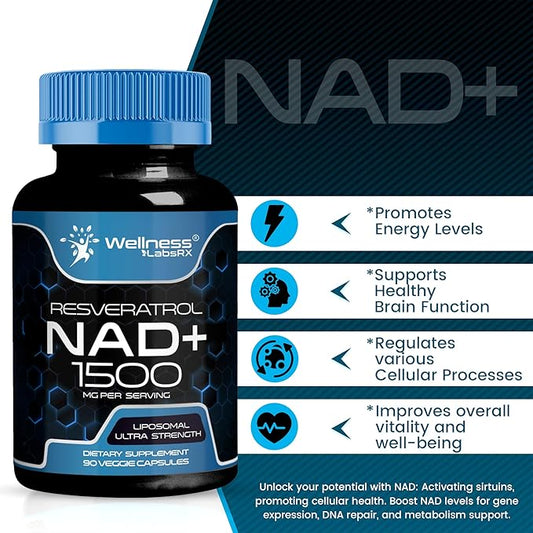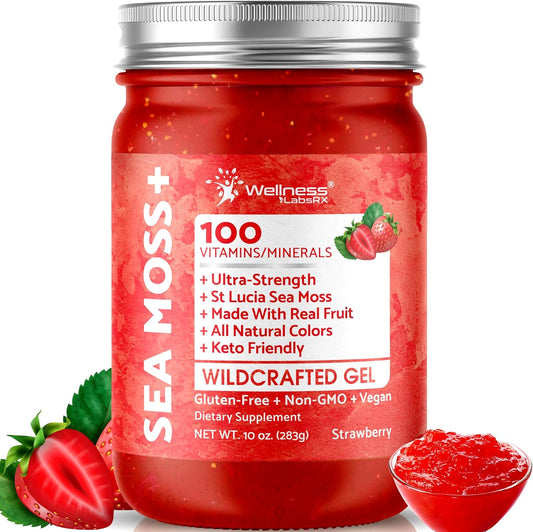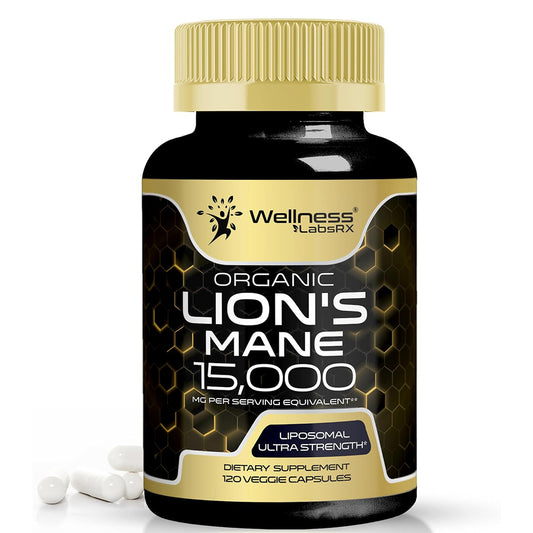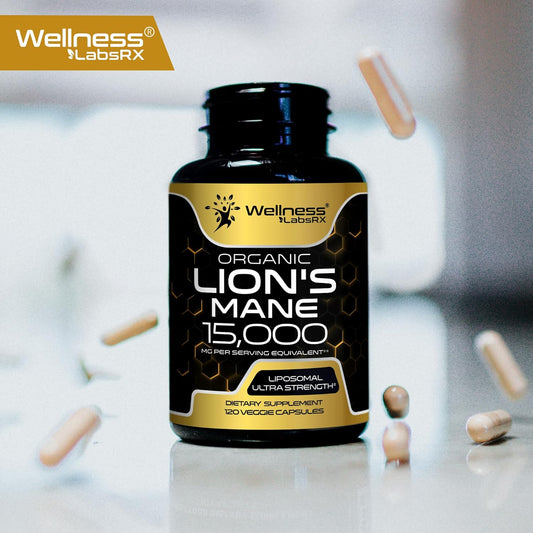NAD (Nicotinamide Adenine Dinucleotide): The Molecule of Cellular Energy
Nicotinamide adenine dinucleotide (NAD) is a coenzyme found in every living cell, playing a central role in cellular respiration, energy production, and metabolism. NAD exists in two forms: the oxidized state (NAD+) and the reduced state (NADH), which work together in important enzymatic processes that keep cells healthy. As people age, NAD+ levels naturally decline, which may lead to low energy, increased oxidative stress, and age-related health issues. Because of this, researchers and health experts are exploring ways to support NAD+ levels, from lifestyle strategies to the use of advanced nutritional support such as NAD+ with Resveratrol formulations. In this article, we’ll look at the roles of NAD+, how it affects human health, and strategies aimed at restoring healthy NAD+ levels.
Physical and Chemical Properties of NAD+
Nicotinamide adenine dinucleotide (NAD) is a coenzyme present in every living cell. It plays a central role in energy production, metabolism, and cellular repair. NAD exists in two main forms, NAD+ (oxidized) and NADH (reduced), which cycle back and forth to keep cells functioning at their best.
Structure and Function
NAD is made from two nucleotides joined together, one with adenine and the other with nicotinamide. This unique structure allows it to carry out redox reactions, where NAD+ accepts electrons to become NADH, and NADH donates electrons to convert back into NAD+. This cycle powers enzymes and drives essential biological processes.
Appearance and Stability
In its natural form, NAD appears as a white crystalline powder that dissolves easily in water. It remains stable when kept dry and away from light, but it can break down in very acidic or alkaline environments. In solution, NAD+ is colorless and must be stored at cool temperatures to preserve stability.
Light Absorption and Fluorescence
NAD+ and NADH absorb ultraviolet (UV) light, which makes it possible to measure their levels in cells. NADH also produces a soft blue fluorescence under UV light, a property scientists often use to study metabolism and energy activity inside cells.
Concentration in Cells
The majority of NAD+ is found in the mitochondria, also called the powerhouse of the cell. Smaller amounts are present in the cytoplasm, where movement depends on specialized transport proteins. The ratio of NAD+ to NADH is especially important; a high ratio supports healthy energy production and repair, while a low ratio may signal stress or reduced efficiency in cellular function.
Why It Matters
The NAD+/NADH balance is a strong indicator of cellular health, aging, and metabolism. Supporting healthy NAD+ levels can help protect cells, boost repair, and maintain vitality over time. Because NAD+ levels naturally decline with age, many people are now exploring nutritional approaches and NAD supplements as a way to maintain balance and support long-term wellness.
The Functioning of NAD+ in the Cell
The energy derived from the digestible substrates, especially the macronutrients is efficiently CHANNELED into the body owing to this active molecule. It serves an important function in the mitochondria, the organelle responsible for cellular respiration, by supporting the synthesis of adenosine triphosphate ATP, the primary energy stored in cells. If NAD+ levels fall as a result of cells being unable to produce enough energy, cells will become dysfunctional and experience exhaustion. NAD+ is also involved in the repair of damage done to the DNA therefore sustaining its structure. This is relevant in that DNA is normally damaged with increasing age leading to a process referred to as aging and the development of pathological processes like cancer.
NAD+ and Aging
The reduction in the levels of NAD+ is generally believed to be one of the most important causes of aging. As people become aged, it is apparent that there is a reduction in the effectiveness of the enzymes responsible for the production of NAD and there are less of the molecules in the system. This reduction is linked to various diseases including Alzheimer’s, obesity, diabetes, and heart diseases. A study conducted in 2018 and appeared in Cell Metabolism showed that higher levels of NAD+ administration in mice led to more active mitochondria and stronger muscle mass and had a longer life expectancy. These suggest that there are reasonable chances that the enhancement of the level of NAD+ will turn out to be quite efficient in slowing down aging of the body tissues among people.
Effects of NAD+ on Neuroprotection
Additionally, the regenerative effects of NAD+ have been found in neurons and other cells of the nervous system as well. In particular, a number of studies have proved that a normal concentration of NAD within neurons is naturally regulated and protects neurons from Alzheimer's and Parkinson’s neurodegenerative diseases. Numori et al published the effect of NAD+ on cognition in animal models in 2019 in Nature Neuroscience. In this study, it was shown that while using NAD+ supplementation neuroinflammation and oxidative injury decreased and cognition improved. It is worth noting, sirtuins, the enzymes that contain NAD+ as their active site, respond to various stressors within cells and actively regulate lifespan. Both the hypothesis and experiments point that this influence on cognition will be even stronger if high NAD levels are achieved.
NAD+ & Metabolic And Cytosolic Engagement
NAD+ can also be considered as a very important enzyme for metabolic health. It controls glucose consumption as well as the processes of lipid utilization and insulin action which are essential for maintenance of body weight and avoidance of a metabolic disorder. Several studies that aim to elevate surplus usage of endogenous NAD content have shown positive results regarding bodyweight and insulin sensitivity enhancement in animal models of obesity. Another paper 2016 in Science states that nicotinamide adenine ribose NR which is one of the precursors of NAD+ enhances mitochondrial function and it reduces body fat in mice fed with a high fat diet. There is still a lack of more studies but these studies indicate that we may have hope in preventing or treating metabolic disorders in human beings with NAD.
NAD+ Supplementation and Therapies
As a derivative, NAD+ will have a modest effect on cellular health status. While certain compounds related to it such as nicotinamide riboside (NR) or nicotinamide mononucleotide (NMN) are more often sold as health supplements than drugs. As a precursor, it acts as a source for the depression of NAD+ levels in the body to some beneficial potential like health and longevity among others. There are many studies in the pipeline to try and build on the assertion that NAD+, as a molecule, is more useful as a potential therapy. From the initial studies, this was followed by the ability to reverse disease markers, which was observed in some stopping blood, and additional restoration of metabolic, cardiovascular and cognitive functions.
There are many approaches also in the wellness section apart from supplements like and therapy for fatigue and other symptoms. It is a technology that completely avoids the digestive system where methanol is given through an IV hypodermic of nad. Many of the patients have cited advantages like relief from hemosiderosis, enhancement of physical ability, and reduction of pain although these therapies are beneficial in the short term, there is no guarantee that their long term effect will be beneficial.
Best Time to Take NAD Capsules
For most people, the best time to take NAD capsules is in the morning with a glass of water. Taking them early in the day helps support your body’s natural energy cycle, making it easier to feel balanced and alert. Some also prefer splitting the dose, one capsule in the morning and one in the afternoon, to maintain steady support throughout the day.
Since NAD plays a key role in cellular energy and metabolism, consistency matters more than timing. The important thing is to take your capsules daily as part of your wellness routine. Whether you choose morning, midday, or evening, pair your supplement with a regular habit such as breakfast or your afternoon tea to make it easier to remember.
Conclusion
The authors extend their medicine background to explain how NAD+ in full nicotinamide adenine dinucleotide is a coenzyme that is mobile and readily available in living cells and organisms and takes part in various cellular processes such as energy metabolism, DNA damage repair or even homeostasis. It is very simple because the amount of NAD+ present in people decreases every year. One such area of interest is strength training aimed at the supplementation of NAD+ - or Nate Healthy Aging, where the goal is to improve cognitive function, metabolic health and help to support the body in the aging process. Even if there is still a necessity to further additional trials which are needed to extend the understanding of the clinically benefits of NAD+ supplementation, it continues to be evident on the current findings that it would require maintaining adequate levels of NAD+ for the benefits of health.

